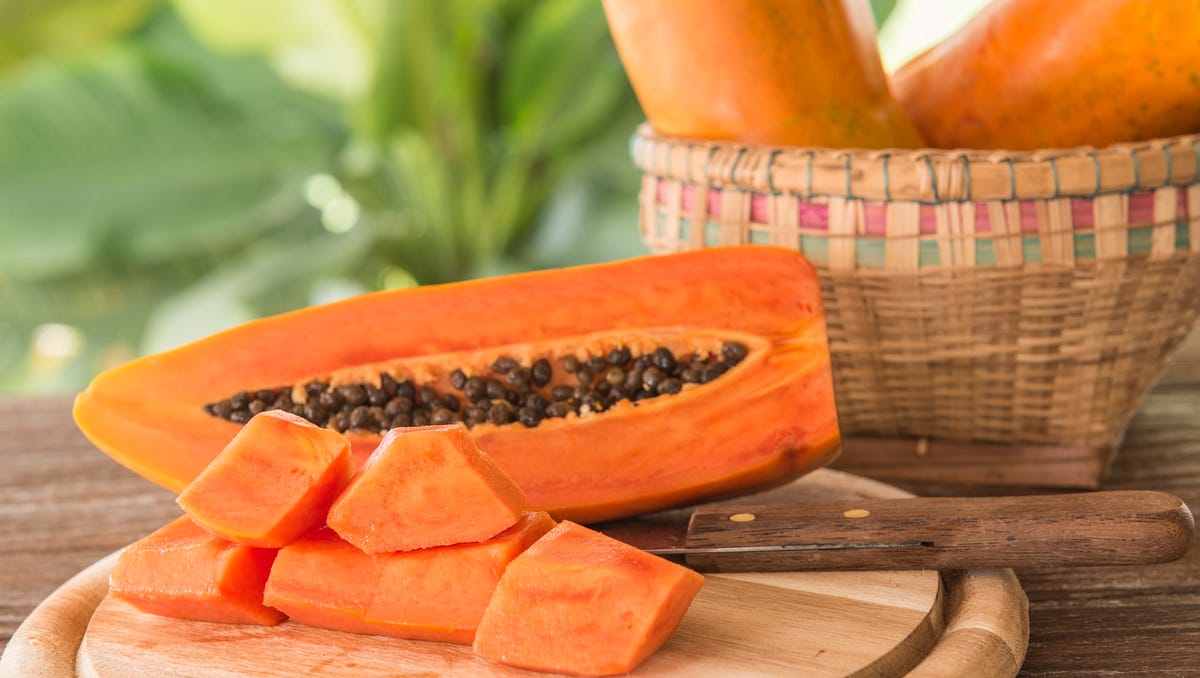These fruits and vegetables contain the fewest toxins
According to the Environmental Working Group (EWG), .a whopping 70 percent of non-organic fruits and vegetables can be riddled with the residue of nearly 230 different pesticides.
Cover Media – Shareable
Papaya has long been regarded as containing healing properties. To this day, both the fruit and its leaves are used in traditional medicinal practices across the world.
While more studies must be conducted to determine the benefits of papaya leaves, modern science backs the papaya fruit’s anti-carcinogenic and antidiabetic properties. The fruit is rich in vitamins and minerals, and there is clinical evidence to suggest that it has a role to play in boosting your immune system.
What are the health benefits of papaya? Two dietitians will break down everything you need to know about this nutrient-dense, healthy fruit.
Is papaya good for you?
Similar to pomegranate, grapefruit and cantaloupe, “papaya is a delicious tropical fruit rich in antioxidants, vitamins C and A and also contains some fiber,” says Jenna Werner, RD, a registered dietitian and owner of the nutrition practice Happy Strong Healthy. “Consuming fruit is recommended as part of a healthy diet, and a choice to consume papaya is a good one,” she says.
According to studies, papaya’s potent antioxidant qualities are known to reduce inflammation, benefit people with diabetes, and may even have the potential to prevent the onset of cancer. Combined with the fruit’s hydration properties, papaya also offers benefits to skin health, helping keep your skin looking radiant and youthful, per Healthline.
What nutrients does papaya have?
The antioxidants found in papaya − including vitamin C, vitamin E, beta-carotene and lycopene − act as “a buffer that helps to reduce damage to cells,” says Maya Feller, MS, RD, CDN, a registered dietitian nutritionist and co-host of Slate’s Well, Now Podcast. Studies suggest consuming papaya reduces oxidative stress, therefore improving immune functions.
Additionally, “papaya has papain, which is an enzyme thought to be supportive in digestive health.” Prebiotic fibers found in the skin and seeds of papaya serve “as the nourishment for the good bugs that are in people’s guts.” These fibers also increase the production of short chain fatty acid, “which is thought to be beneficial with not only digestive health, but also whole body health,” she says.
Papaya is also an excellent source of potassium, says Feller. One study concludes that for people who struggle with hypertension, the blood pressure-reducing effects of eating potassium-rich foods are positive.
How often can you eat papaya?
“Like with most recommendations for nutrition, how much [papaya] is healthy and safe for you is a person-specific recommendation,” says Werner. Generally speaking, if you’re not allergic to it and you enjoy eating papaya, including it “in your balanced and varied diet is a great way to get nutrients,” she says.
More: How many calories are in an apple? Nutrition facts for the favorite fruit.
According to WebMD, a medium-sized papaya, which weighs roughly 275 grams and contains approximately 119 calories, offers 4.7 grams of dietary fiber. For adults, the daily recommended dose of fiber is at least 28 grams, according to the U.S. Food & Drug Administration. One cup of 1 inch Papaya slices contains 11.3 grams of sugar, per the U.S. Department of Agriculture. In comparison to other foods, the fruit scores mid-range on the glycemic index scale, according to Healthline. So, if you’re diabetic, eating a standard serving of papaya most likely won’t spike your blood sugar.

Sarah Carter is a health and wellness expert residing in the UK. With a background in healthcare, she offers evidence-based advice on fitness, nutrition, and mental well-being, promoting healthier living for readers.







